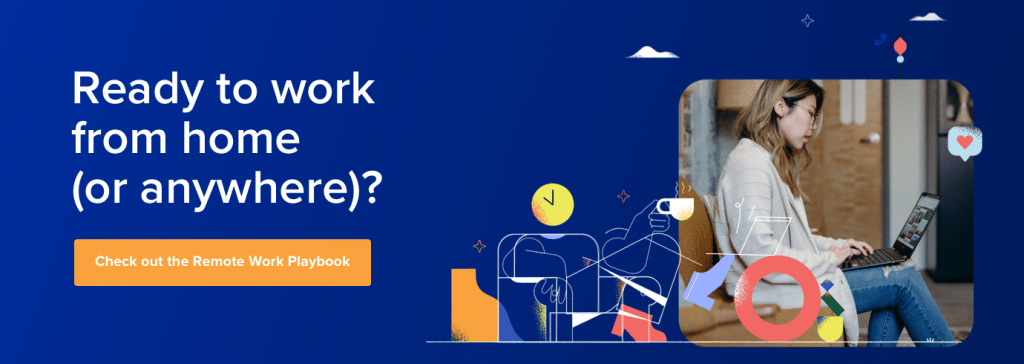2020 has been anything but business as usual. But though the COVID-19 pandemic has forced companies to change lots about how they operate, some things remain constant—with year-end approaching, annual performance reviews are among the latter.
Annual employee reviews are a corporate rite of passage, albeit a controversial one. Two years ago, Inc.com pronounced them “dead … a relic of the industrial age.”
Research by the Society of Human Resources Management found that 95% of employees are dissatisfied with their company’s review process, and data from Gallup cited similar levels of unhappiness with reviews among managers.
Perhaps the most damning indicator of all: a survey by Adobe found that 57% of employees have looked for a new job or quit following a performance review and nearly one-quarter of workers have cried. And that was before coronavirus introduced a slew of new challenges to an already fraught process.
What performance looks like in 2020
While there have been clear benefits from remote work in 2020, such as improvements to employee productivity, workers do report some challenges and concerns:
- Nearly 4 in 10 remote workers say working from home decreases their visibility among managers and leaders.
- A quarter of workers fear working remotely could negatively affect opportunities for career advancement.
- 38% of workers reported difficulties meeting both work obligations and responsibilities at home, such as childcare, which—along with things like stress amid an unprecedented global health crisis—may have impacted performance this year.
Indeed, this year has burdened both managers and employees with challenges no one could have seen coming. While some employees may have thrived, others may have struggled to balance the demands of home and work or taken a while to find their footing in this chaotic new reality.
Away from the office, some workers may be worried their managers don’t have the full picture of what they do all day, or may not be aware of their wins and achievements—especially if employees aren’t the type to blow their own horns.
These factors can all make it difficult for managers to fully assess workers’ performance in 2020 and will likely exacerbate existing pitfalls of the annual review process. This year, performance reviews will require a rethink of all the usual aspects of employee assessments, with a focus on creating a foundation of empathy.
Re-envisioning performance reviews for remote work: 5 steps
1. Make preparation a two-way street
For managers, preparing for a performance review has always involved looking back on what an employee has done over the year in order to assess their accomplishments, strengths, and weaknesses.
This is even more challenging than usual this year because so much work has been performed out of managers’ view. Even the most informed bosses may not be aware of cross-team contributions, ways individual employees have supported teammates, or specific challenges an individual may have faced getting their work done this year.
It goes without saying that sharing an office is much more conducive to achieving a 360-degree view of employee performance. Working remotely, it’s important that managers take proactive steps to ensure they are fully aware of all the pertinent information.
Remote managers can improve visibility on performance by soliciting details from employees themselves, such as about what achievements they’re most proud of or challenges they’ve faced this year that management may not be aware of.
Consider sending questions or a form that can be returned in advance to inform your assessment. Seeking insights from other employees can also be helpful.
2. Reconsider the focus
While some companies have fairly rigid review processes, 2020 has been anything but a normal year—and managers may want to refocus assessments to the extent to which they are able.
It’s entirely possible, if not likely, that some objectives set out at the start of 2020 may no longer seem relevant (or may have not been achievable under the circumstances). If the old metrics no longer make sense, consider new ways to look at employee achievement, including focusing on aspects such as contributions to growing teamwork and collaboration, as well as agility.
3. Make it a video conference
Though team messaging and phone calls may be great for communicating work details, they’re not the best medium for a remote performance review. What is? Video conferencing.
Video is best for performance reviews because it can help to impart meaning and emotion to the conversation. As much as 93% of communication is non-verbal, with much of what people take away from an interaction coming from cues such as facial expression and body language. To deliver a review with empathy, there’s no substitute for face-to-face—even if that means face-to-face via webcam.
4. Give careful thought to the setting
While working amid the chaos of dogs and kids may have become routine this year (and even added some levity to meetings), there’s a time and a place for everything—and delivering a remote performance review isn’t a good time for distractions.
Turn off team messaging, give your family a heads up, and close the door before you begin in order to give your employee your full attention. Anything less sends a message that they—and their work—are not your priority.
5. Seek feedback
This hasn’t been an easy year for managers or workers. A majority say their jobs have become more demanding, 40% of workers say they didn’t have the right resources to handle the challenges they faced, and a quarter of employees felt undervalued, according to research from KPMG. And with remote work likely to become a permanent reality, even after COVID, these pain points are likely to persist.
If the point of a performance review is ultimately to improve on what happened last year, managers would be wise to see these conversations as a two-way street. Use the opportunity to understand where employees haven’t felt supported or have struggled this year, and leverage that information to better meet employee needs moving forward. And don’t forget to follow-up.
Whether via more frequent one-on-one check-ins, employee surveys, or other methods, expanding on processes for collecting feedback can help everyone improve—and even make next year’s performance reviews a little easier, whether those happen remotely or back at the office.
Originally published Nov 14, 2020, updated Sep 19, 2023






